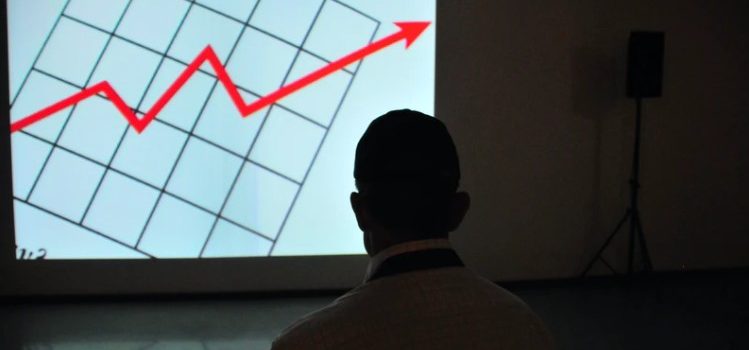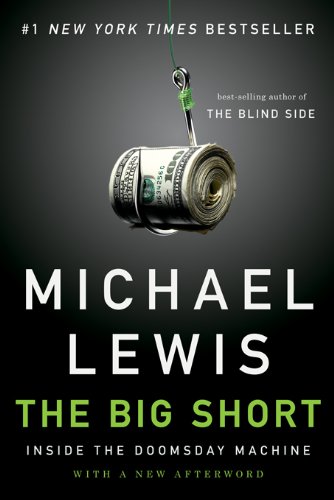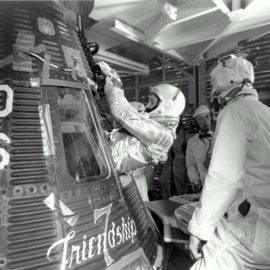

This article is an excerpt from the Shortform summary of "The Big Short" by Michael Lewis. Shortform has the world's best summaries of books you should be reading.
Like this article? Sign up for a free trial here .
Who is Michael Burry? What was his involvement in the housing market crash?
Michael Burry is the founder of the hedge fund Scion Capital. In 2007, Burry saw a rare opportunity in the subprime housing bond market. He was skeptical (to say the least) about the confidence with which Wall Street sold mortgage-backed securities. He realized that these securities were extraordinarily overvalued because they were backed by questionable loans to uncreditworthy Americans. So, Burry decided to short the housing market.
Here goes the story of Michael Burry’s “Big Short.”
Dr. Michael Burry: An Eye for Value
Barry was known for consistently beating the market by wide margins, but he didn’t have secret information or special technology that anyone else on Wall Street didn’t have access to.
He was doing nothing more than buying stocks and analyzing companies’ financial statements. But simply analyzing statements set him apart. No one else was bothering to do the hard, tedious work of actually studying up on the companies they were investing in.
A $100-per-year subscription to 10-K Wizard gave him access to all the corporate financial statements he could ever need. If that didn’t get him what he needed, he would sift through obscure (yet publicly available) court rulings and government regulatory documents to glean valuable nuggets of information that could change the value of companies and markets. He was finding information in places no one else was bothering to look.
Burry’s Short
Given this background, Burry saw a rare opportunity in the subprime housing bond market, once again where no one else was looking. But this was a twist on his usual approach. Instead of looking for assets that were undervalued, he was going to target the subprime market because of his conviction that it was extraordinarily overvalued. He was going to short the housing market.
Burry had, with characteristic fastidiousness, studied the underlying loans which made up the pool of mortgages being stuffed into the bonds. He saw that borrowers with no income and no documentation were taking up a larger and larger share of the mortgages. Lending standards had collapsed in the face of the market’s insatiable demand for subprime, as loan originators devised more and more elaborate means to justify loaning money to clearly un-creditworthy borrowers. These loans were then being repackaged into bonds and sold off by the big banks.
But how would Burry short these types of bonds? Their structure made them impossible to borrow, as the tranches were too small to individually identify. The market didn’t have a mechanism for an investor like Burry, who believed that the subprime mortgage bond market was essentially worthless. But Burry knew a workaround to this problem.
Burry saw that now was the time to act. Once the teaser rates on the subprime loans went away and borrowers started getting hit with higher interest rates (in roughly two years), there would be a wave of defaults that would bring the mortgage bond market to its knees. Once that started happening, lots of investors would be desperate to purchase insurance on the bonds they’d invested in—and the only way they would be able to do this would be through the credit default swaps that Burry would own.
But he couldn’t wait too long to buy the swaps. Once the mortgage market started to crumble, the cost of purchasing insurance on subprime mortgage-backed securities would skyrocket, making his trade unfeasible. Timing was key—he needed to corner the market on credit default swaps before the rest of Wall Street caught on, while the swaps could still be had on the cheap.
But there was a hitch in his plan: there were no credit default swaps for subprime mortgage bonds. The banks would have to create them. Furthermore, most of the big firms that would be willing to create them might run into solvency issues and be unable to actually pay Burry the returns on his swaps if his catastrophic predictions were accurate. They were too exposed to subprime. He ruled out Bear Stearns and Lehman Brothers as potential credit default swap sellers, reasoning that they were too deep in the subprime game to be able to pay him when the bonds failed.
In 2005, only Deutsche Bank and Goldman Sachs expressed any interest. Burry hammered out a deal with them to establish a pay-as-you-go contract, ensuring payment as individual bonds failed. In May 2005, he purchased $60 million in swaps from Deutsche Bank, $10 million apiece on six separate bonds. Burry hand-picked these bonds after having read the prospectuses, seeing that they were composed of the dodgiest, most questionable subprime loans.
Eventually, he set up a separate fund, called Milton’s Opus, dedicated solely to purchasing credit default swaps on mortgage-backed securities. In October 2005, he told his investors that they now owned roughly $1 billion of such assets. Some investors were outraged that Burry had tied up their money in (what seemed to them) such a risky bet. The U.S. housing market had never collapsed in the way that Burry had predicted. But Burry also knew that a full-on collapse wasn’t necessary for him to reap enormous profits. The way the swaps were structured, he would make a fortune if even a fraction of the mortgage pools went belly-up. The banks barely seemed to understand what they had sold him.
But within months, the market was starting to see the wisdom of Burry’s move. Before the end of 2005, representatives from the trading desks at Goldman Sachs, Deutsche Bank, and Morgan Stanley were asking Burry to sell back the credit default swaps he’d purchased—at very generous prices. Their sudden interest in this financial instrument, which he’d helped them create mere months before, could only mean one thing—Michael Burry’s “Big Short” was a success as the underlying mortgages were starting to fail.
———End of Preview———

Like what you just read? Read the rest of the world's best summary of "The Big Short" at Shortform . Learn the book's critical concepts in 20 minutes or less .
Here's what you'll find in our full The Big Short summary :
- How the world's biggest banks contributed to the 2008 financial crisis, greedily and stupidly
- How a group of contrarian traders foresaw the bubble popping, and made millions from their bets
- What we learned from the 2008 crisis - if anything






